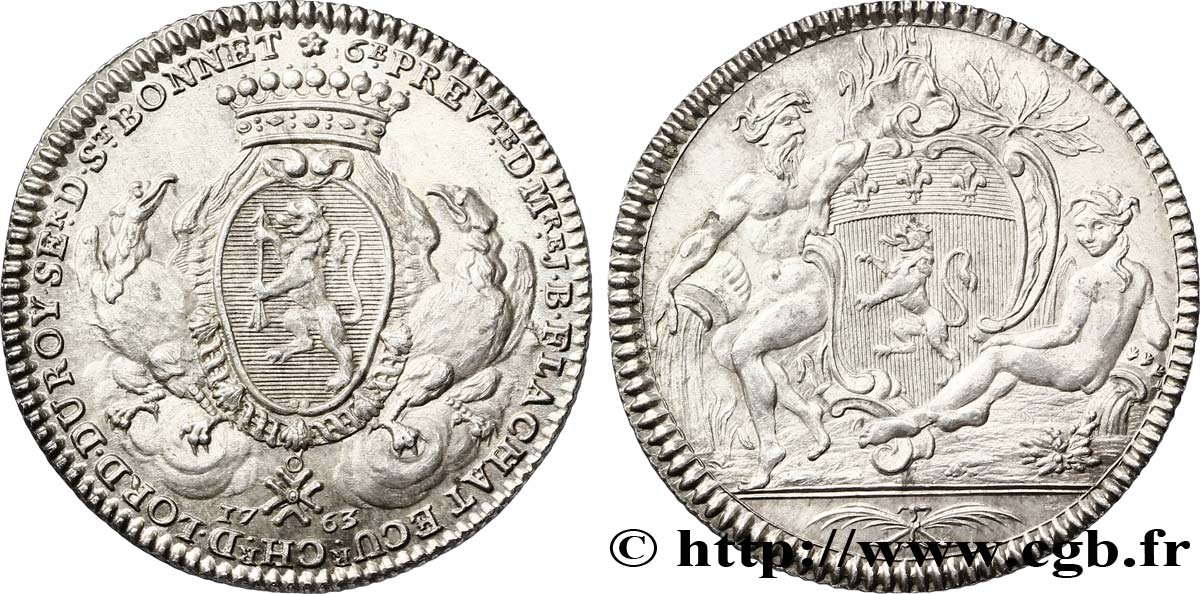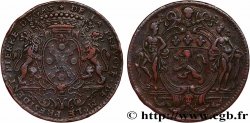E-auction 615-597324 - LYONNAIS - CONSULATE OF LYON Jean-Baptiste Flachat, sixième prévôté 1763
You must signin and be an approved bidder to bid, LOGIN TO BID. Accounts are subject to approval and the approval process takes place within 48 hours. Do not wait until the day a sale closes to register. Clicking on « bid » constitutes acceptance of the terms of use of cgb.fr private e-auctions.
Bids must be placed in whole Euro amounts only. The sale will start closing at the time stated on the item description; any bids received at the site after the closing time will not be executed. Transmission times may vary and bids could be rejected if you wait until the last second. For further information ckeck the E-auctions F.A.Q.
NO BUYER'S FEE.
NO BUYER'S FEE.
Type : Jean-Baptiste Flachat, sixième prévôté
Date: 1763
Metal : silver
Diameter : 30 mm
Orientation dies : 6 h.
Weight : 10,08 g.
Edge : cannelée
Puncheon : sans poinçon
Rarity : R1
Coments on the condition:
Légers points d’usure
Catalogue references :
Obverse
Obverse legend : * 6E PREVTE. D MRE. J. B. FLACHAT ECUR. CHR. D. LORD. DU ROY SER. D. ST. BONNET.
Obverse description : Écu ovale aux armes de Jean-Baptiste Flachat, placé sur un cartouche et supporté par deux aigles, sommé d’une couronne comtale et entouré du collier, au-dessous 17 - 63.
Reverse
Reverse description : Écusson ovale aux armes de la Ville, placé sur un cartouche, soutenu par les figures allégoriques nues et assises du Rhône et de la Saône laissant échapper l’eau de leurs urnes.








 Report a mistake
Report a mistake Print the page
Print the page Share my selection
Share my selection Ask a question
Ask a question Consign / sell
Consign / sell
 Full data
Full data









